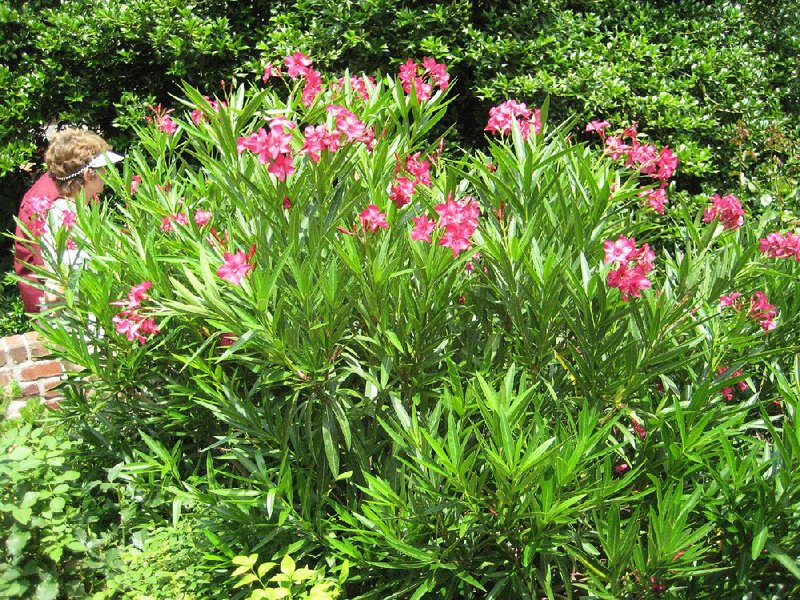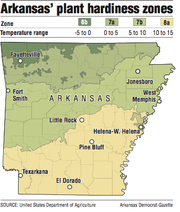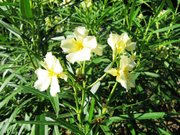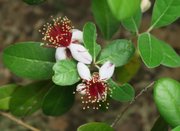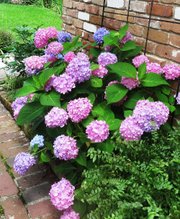There are myriad plants in the world and knowing which ones to choose can be daunting.
Gardeners have a lot to consider: what plants need varies by sunlight, water, fertilization and soil types. Another key component is winter hardiness.
In that area, the United States Department of Agriculture provides some guidance.
The USDA developed a plant hardiness zone map in 1960 and it is revised periodically, based on weather data collected over a period of time.
The current edition of the map, which was released in 2012, has some important changes from earlier versions. The zones represented on the 1990 map were further divided and the distribution of the zones changed in Arkansas to reflect warmer temperatures extending north into the central portion of the state.
Arkansas now has four zones. Little Rock and points south are for the most part 8a (minimum temperature of 10-15 degrees), with other areas being 7b (5-10 degrees), 7a (zero-5 degrees) and the far northwest corner 6b (-5 to zero). The new map is based on the average low temperatures between 1976 and 2005.
That the warmest zone now encompasses Little Rock is a noticeable change. Also notable is that cities are generally warmer than the countryside. Following the newest guidelines, Little Rock area gardeners can consider adding plants such as oleander and pineapple guava to their collections since it is now possible for them to overwinter in the area.
The USDA zone map most commonly seen in print is the 1990 edition, which divided Arkansas into three zones: Zone 6 in the northern tier, Zone 7 in the center of the state and Zone 8 in the southern tier.
ZIP ZONES
A convenient change is that the current map, which can be found at
tinyurl.com/7r5u267, was designed for the internet -- enter a Zip code and it will show the corresponding planting zone.
Keep in mind this map is giving you one piece of the puzzle -- the average low winter temperature over a period of years. It does not tell you anything about average high summer temperature, rainfall amounts or humidity, so it is a guide, not the ultimate tool in choosing plants.
If you think about it, over the past 20 years in central Arkansas we have seen a few single digit days, but they were rare, and we did not make it down to zero. Northwest Arkansas still has some brutally cold days, but overall the winters are a bit milder. Arkansas is not the only state with that issue.
It would be nice if our weather patterns were precise and we could predict what was going to happen, but every year there are fluctuations. Last year was extremely mild, with our first killing frost hitting central Arkansas Jan. 7. This year our first killing frost was Dec. 8 and in 2013 and 2014 we had severe low temperatures and killing frost in mid-November, so each year is a new year weatherwise.
IT'S A PUZZLE
Many catalogs and suppliers list plant hardiness zones. Use it as one piece of information, but not the only piece.
If you look at the zone maps, many of the zones form a band that begins in the northeastern United States and ends in Washington state. The winter lows across these regions may be similar, but their summers are quite different. For example the Colorado blue spruce is ranked as being hardy from Zone 2 to Zone 7, which means it should be winter hardy in much of Arkansas, but winter isn't the problem. It doesn't like our summers. While you can find a few Colorado blue spruce trees in Arkansas, they aren't the magnificent specimens they are in Colorado, where summers are milder.
Another example is lantana. Most catalogs or references say it is hardy in USDA Zones 10-11 (roots hardy to Zone 8 or 9). In Northwest Arkansas it is almost always an annual that dies each winter. In central Arkansas, after mild winters, it comes back from the root system, making it a moderate perennial. In south Arkansas it is always a perennial, and in Florida it is evergreen.
The key to gardening is trial and error. Hopefully, most of the plants sold as shrubs and trees in Arkansas nurseries should be considered hardy in Arkansas for summer and winter, but extreme weather can still cause damage. For years we couldn't grow figs much taller than 4 to 5 feet tall because they froze to the ground too often, but now we have many 20-foot or taller fig trees. We had no damage last year, but did have some the previous two years. Bigleaf hydrangeas bloomed beautifully this past summer, while they were frozen back the previous two years.
Cold hardiness can also change with the season. Plants are often most susceptible to cold damage if there is an abrupt drop in temperatures versus a gradual cooling off as they are going dormant in the fall, or as they are beginning to grow in the spring. As the days get longer and we experience a few bouts of warm weather, the buds begin to swell and grow. As they leave their dormant state, they are not as cold hardy as they were when totally dormant.
GO FOR IT
Try new plants. If you have a plant that is only moderately winter hardy in your area -- gardenias for instance -- place them in a more protected spot. When we think of a protected spot, it is often an eastern or northern exposure next to the house. South- and west-facing exposed areas may seem warmer, but often contribute to more winter damage. In Arkansas we typically have more problems with huge fluctuations in temperatures than just low temperatures. Plants exposed to full afternoon sun will experience even more fluctuations. Your entire yard could be warmer or cooler than your neighbor's yard because it can be sheltered with trees and shrubs or be more exposed. Low-lying areas typically get colder than hilly yards.
I often say that you are not a true gardener if you have never lost a plant, because you aren't experimenting. So test the waters. There are so many new plants that it is difficult to find hard and fast evidence on what will always survive. If a plant dies, that is an opportunity to buy a new plant.
And remember, there is not a hardiness zone map that will ever take the place of hands-on experience. The key is to garden!
Janet B. Carson is a horticulture specialist for the University of Arkansas Cooperative Extension Service.
HomeStyle on 12/17/2016
